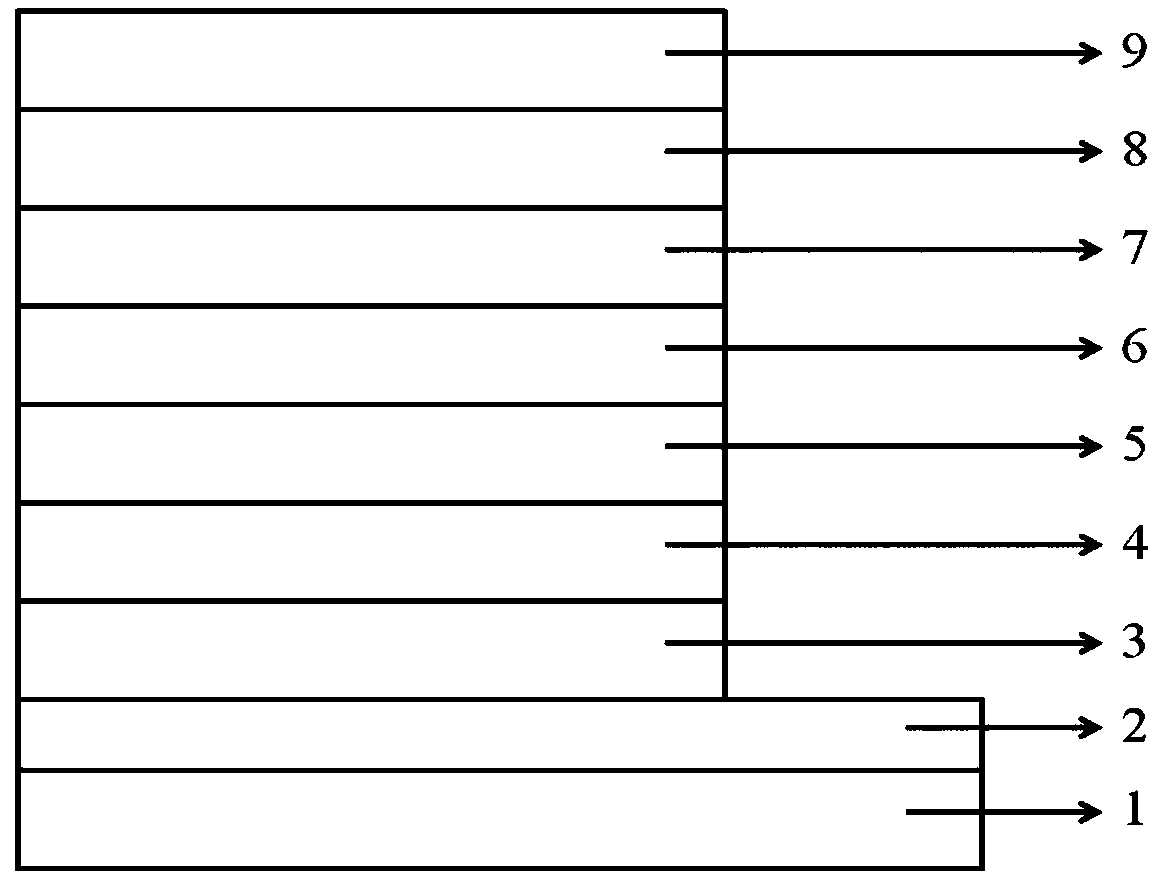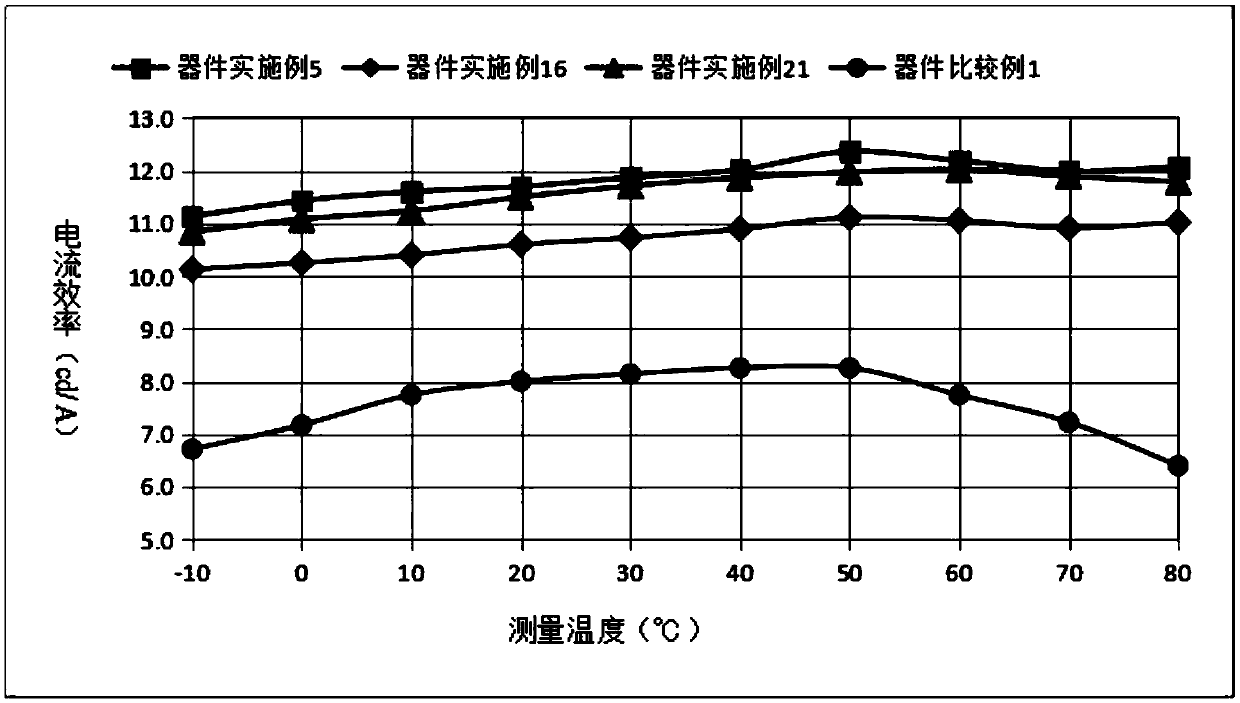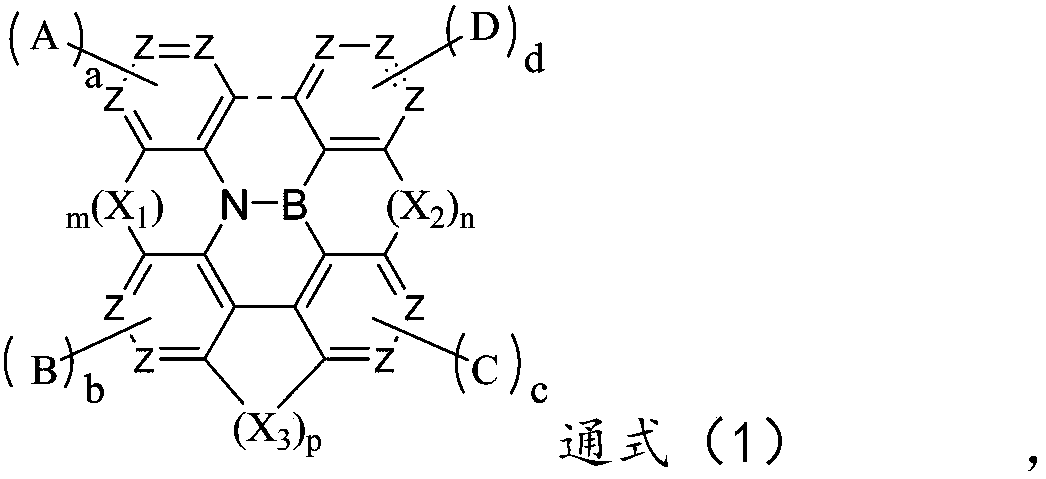Organic electroluminescent material containing boron and nitrogen and application thereof on organic electroluminescent devices
A luminescent and electromechanical technology, applied in luminescent materials, electrical solid devices, electrical components, etc., can solve difficult problems such as high exciton utilization rate, high fluorescence radiation efficiency, low state radiation transition rate, and efficiency roll-off, achieving Not easy to aggregate, good industrialization prospects, and the effect of improving device life
- Summary
- Abstract
- Description
- Claims
- Application Information
AI Technical Summary
Problems solved by technology
Method used
Image
Examples
preparation Embodiment 1
[0059] Preparation Example 1: Synthesis of Compound 3:
[0060]
[0061] In a 250mL three-neck flask, under nitrogen protection, 0.02mol raw material 1, 0.022mol raw material 2, 0.05mol sodium tert-butoxide, 0.2mmol Pd 2 (dba) 3 Add 0.2mmol tri-tert-butylphosphine into 150mL toluene, stir and mix, heat to 110-120°C, reflux for 12-16 hours, and the reaction is complete; naturally cool to room temperature, filter, and the filtrate is rotary evaporated under reduced pressure until there is no distillate. Neutral silica gel column to obtain reactant F-1; ESI-MS (m / z) (M+): The theoretical value is 341.21, and the measured value is 341.17.
[0062]
[0063] Under nitrogen atmosphere, add 0.01mol reactant A-1, 0.011mol reactant B-1, 0.03mol potassium carbonate, 1×10 -4 mol Pd(PPh 3 ) Cl 2 and 1×10 -4 mol triphenylphosphine, then add 110ml V 甲苯 :V 乙醇 :V 水 = 1:1:1 mixed solution, heated to reflux for 24 hours, observed the reaction by TLC until the reaction was complete,...
preparation Embodiment 2
[0068] Preparation Example 2: Synthesis of Compound 6:
[0069]
[0070] The preparation method of compound 6 is the same as Preparation Example 1, and the difference is that reactant B-1 is replaced with reactant B-2, and reactant F-1 is replaced with reactant F-2; Elemental analysis structure (molecular formula C 58 h 58 BN 3 O): theoretical value C, 84.55; H, 7.10; B, 1.31; N, 5.10; test value: C, 84.55; H, 7.14; B, 1.33; N, 5.12. ESI-MS(m / z)(M + ): The theoretical value is 823.47, and the measured value is 823.42.
preparation Embodiment 3
[0071] Preparation Example 3: Synthesis of Compound 7:
[0072]
[0073] The preparation method of compound 7 is the same as Preparation Example 1, and the difference is that reactant F-1 is replaced with reactant F-3; Elemental analysis structure (molecular formula C 49 h 47 BN 2 o 2 ): theoretical value C, 83.28; H, 6.70; B, 1.53; N, 3.96; test value: C, 83.27; H, 6.73; B, 1.55; N, 3.94. ESI-MS(m / z)(M + ): The theoretical value is 706.37, and the measured value is 706.35.
PUM
| Property | Measurement | Unit |
|---|---|---|
| thickness | aaaaa | aaaaa |
| thickness | aaaaa | aaaaa |
| thickness | aaaaa | aaaaa |
Abstract
Description
Claims
Application Information
 Login to View More
Login to View More - R&D
- Intellectual Property
- Life Sciences
- Materials
- Tech Scout
- Unparalleled Data Quality
- Higher Quality Content
- 60% Fewer Hallucinations
Browse by: Latest US Patents, China's latest patents, Technical Efficacy Thesaurus, Application Domain, Technology Topic, Popular Technical Reports.
© 2025 PatSnap. All rights reserved.Legal|Privacy policy|Modern Slavery Act Transparency Statement|Sitemap|About US| Contact US: help@patsnap.com



